Leirungsbrean is a 2 km long glacier in southeastern Jotunheimen, Norway.
No Norwegian mountain is both higher and more southerly than Kalvehøgde, a rim of flat mountain peaks above Leirungsbrean. The rounded peaks are over 2100 m high and their joint north face is a vertical drop of 200 m to the glacier below.

From the foot of Kalvehøgde’s headwall, Leirungsbrean descends another 400 m and ends on flat terrain at 1500 m above sea level. It is the most prominent glacier in the Leirungsdalen valley, feeding the river Leirungsåe. 16 km downstream the river discharges in Gjende, with a beautiful delta right below the gorgeous Knutshøe ridge.
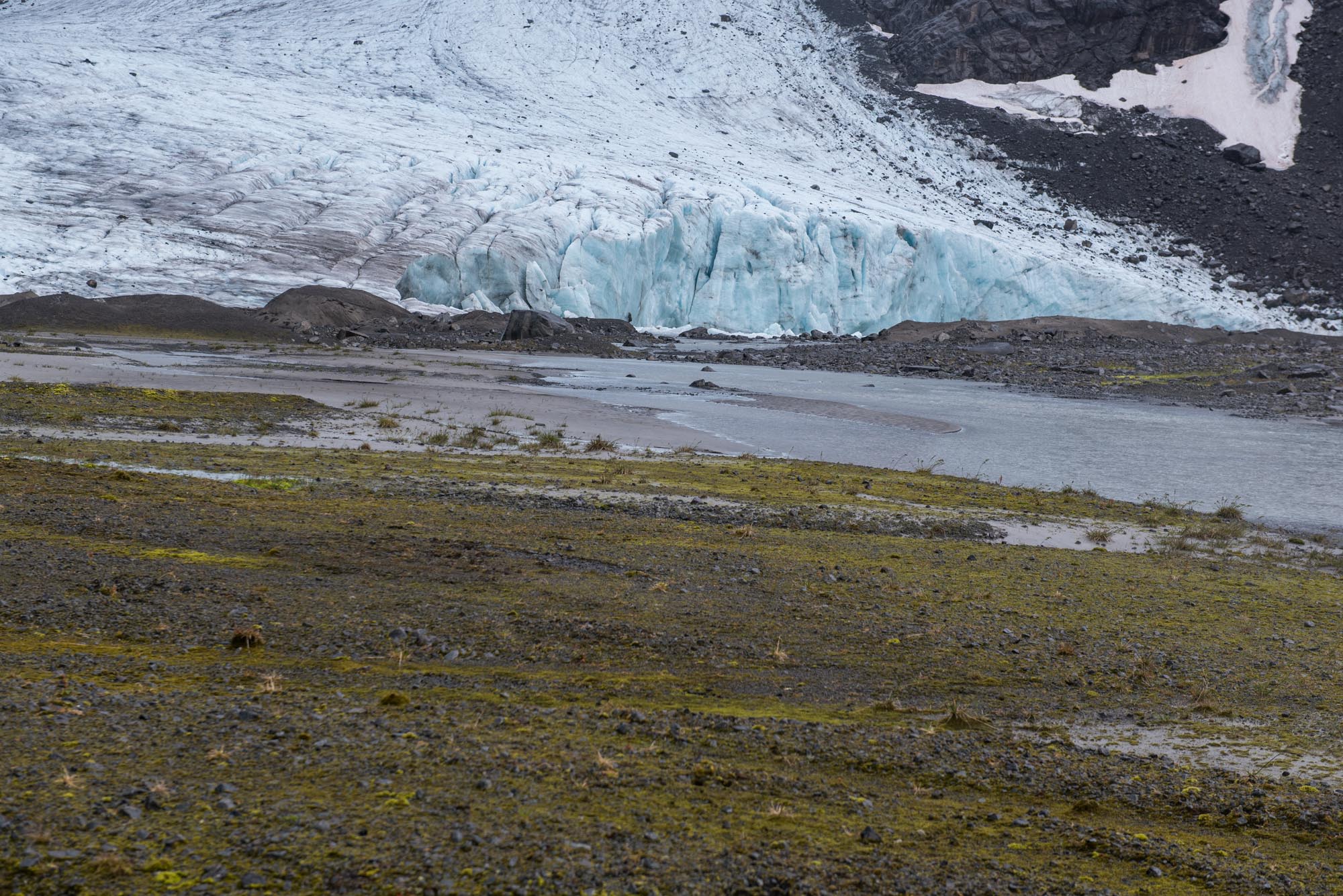
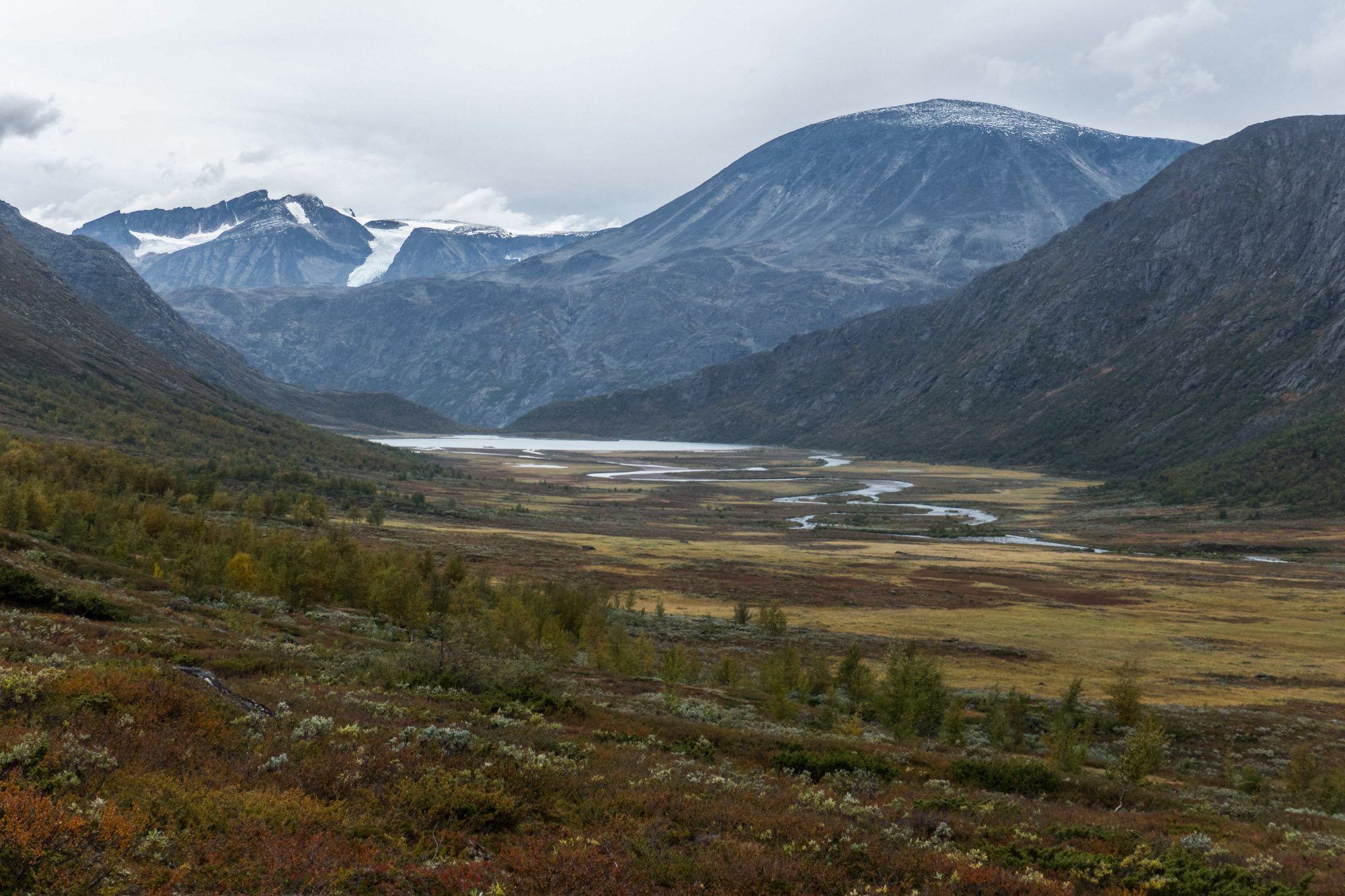
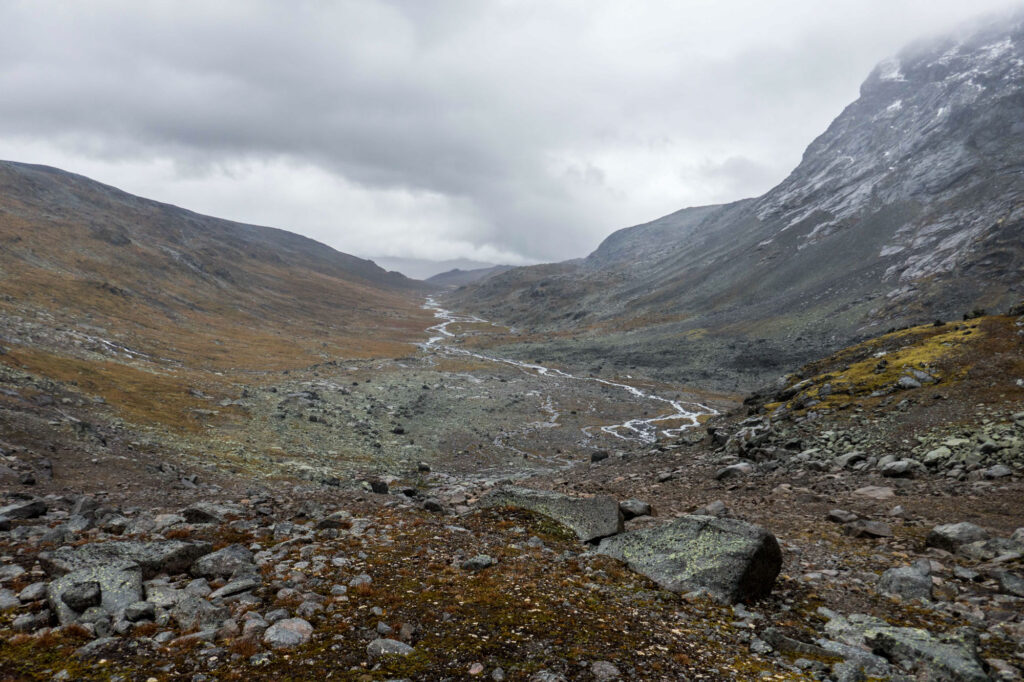
Despite the stunning scenery, there is no information on Leirungsbrean’s historic development. No old photos, no length change measurements, no scientific papers, nothing (but please correct me if I’m wrong). Based on nearby glaciers, Leirungsbrean probably reached its maximum extent in the late 18th century (Baumann, Winkler & Andreassen, 2009). It was 1 km longer back then and likely receded steadily throughout the 20th century.
Around 2015, Leirungsbrean retreated into a basin. Such an overdeepening is eroded by the glacier over millennia and becomes a (proglacial) lake if the glacier recedes further. Indeed, a lake has appeared in front of Leirungsbrean and has grown to 200 m by 2024.
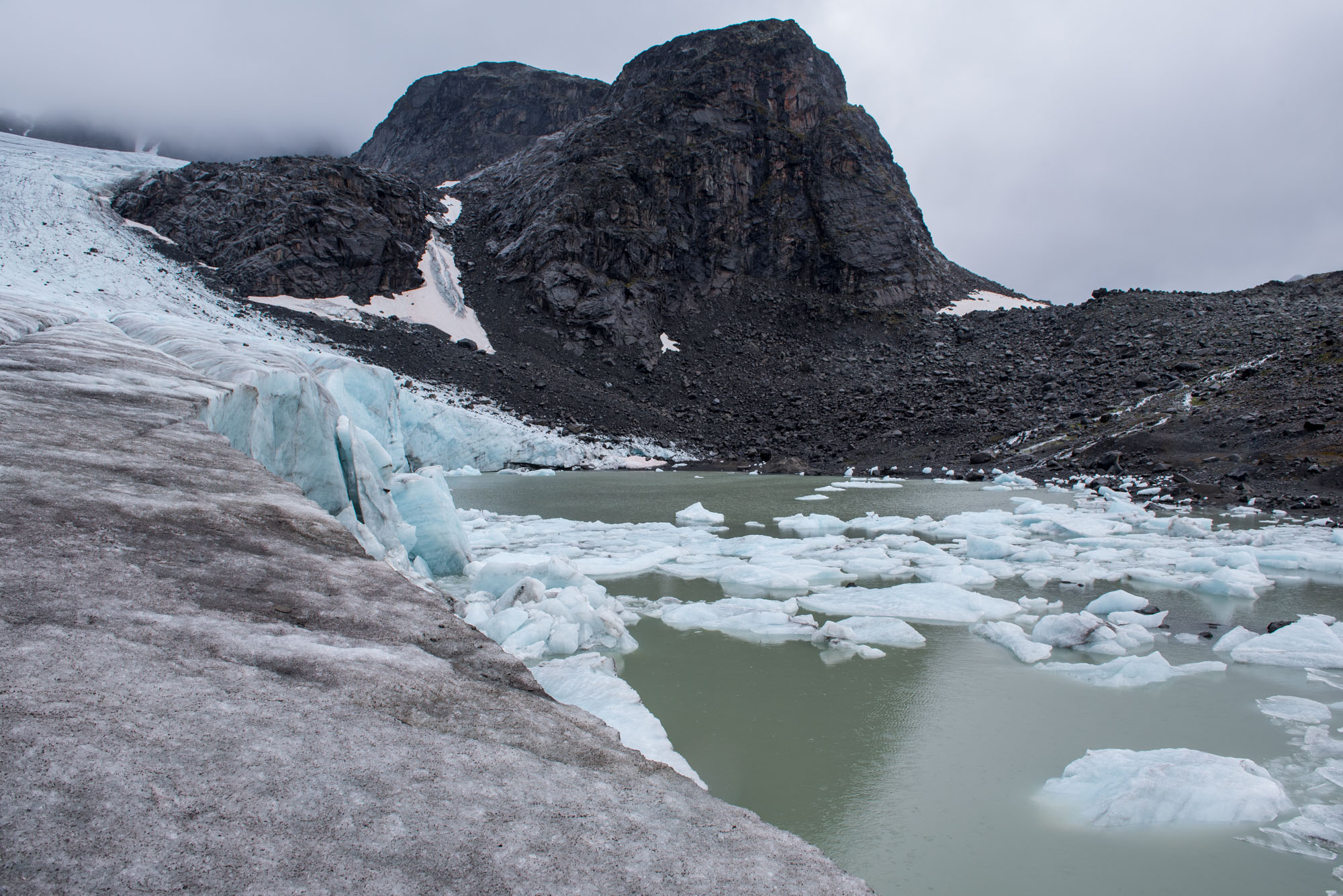
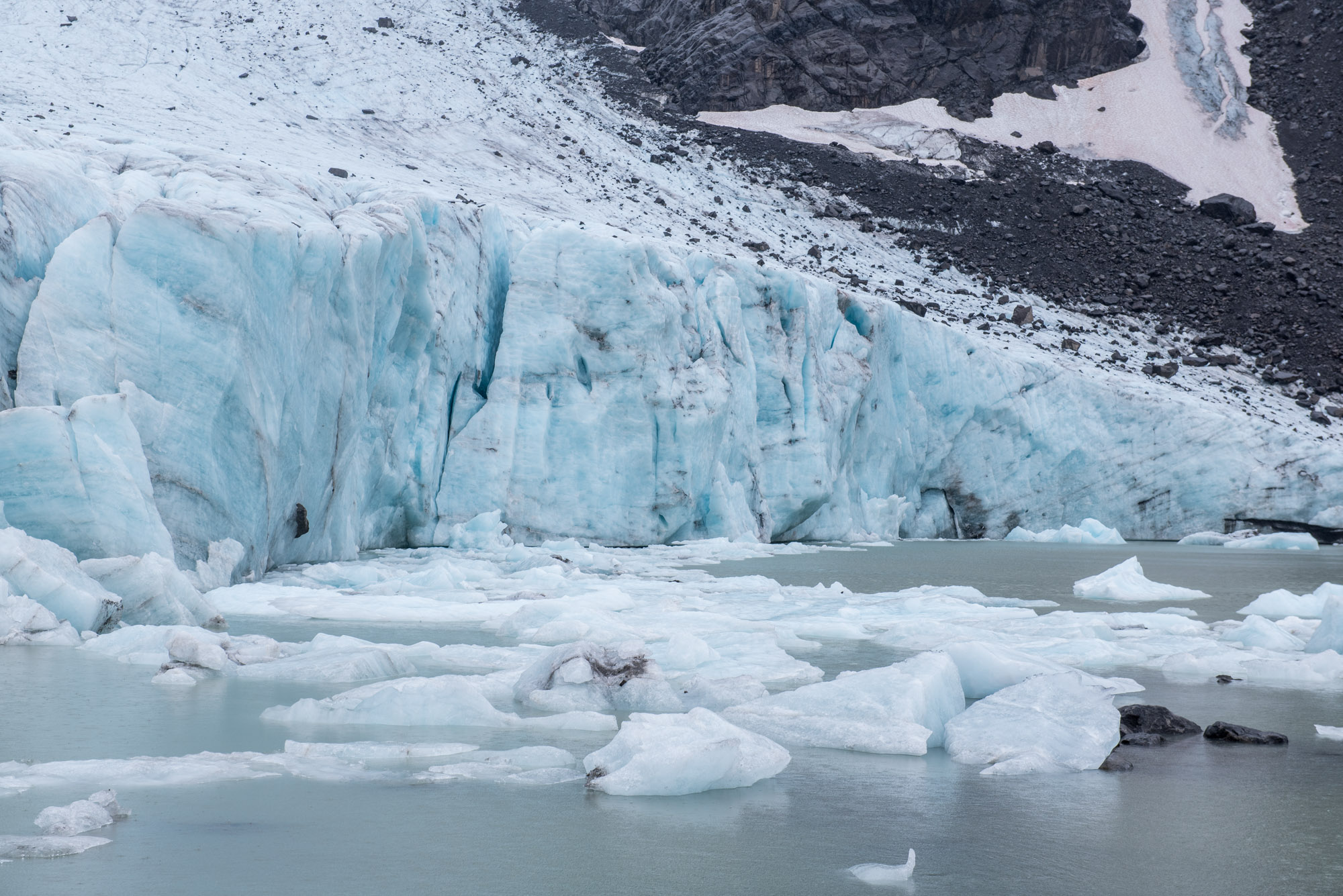
Where the glacier meets the lake a calving front develops. Parts of the glacier break loose from the edge and become small icebergs. This calving process speeds up the glacier retreat, though in a spectacular way. Meanwhile the glacier is also thinning and will leave the flat terrain in the coming decades. Eventually, the glacier will probably disappear altogether.
It wouldn’t be the first time Leirungsbrean disappeared. A nearby glacier (Bukkehåmmårbreen) with a similar altitude and orientation was absent from ten to six thousand years ago (Lie et al., 2004). Since then, this part of Norway has not been free of ice. Within this century, it could become deglaciated again.
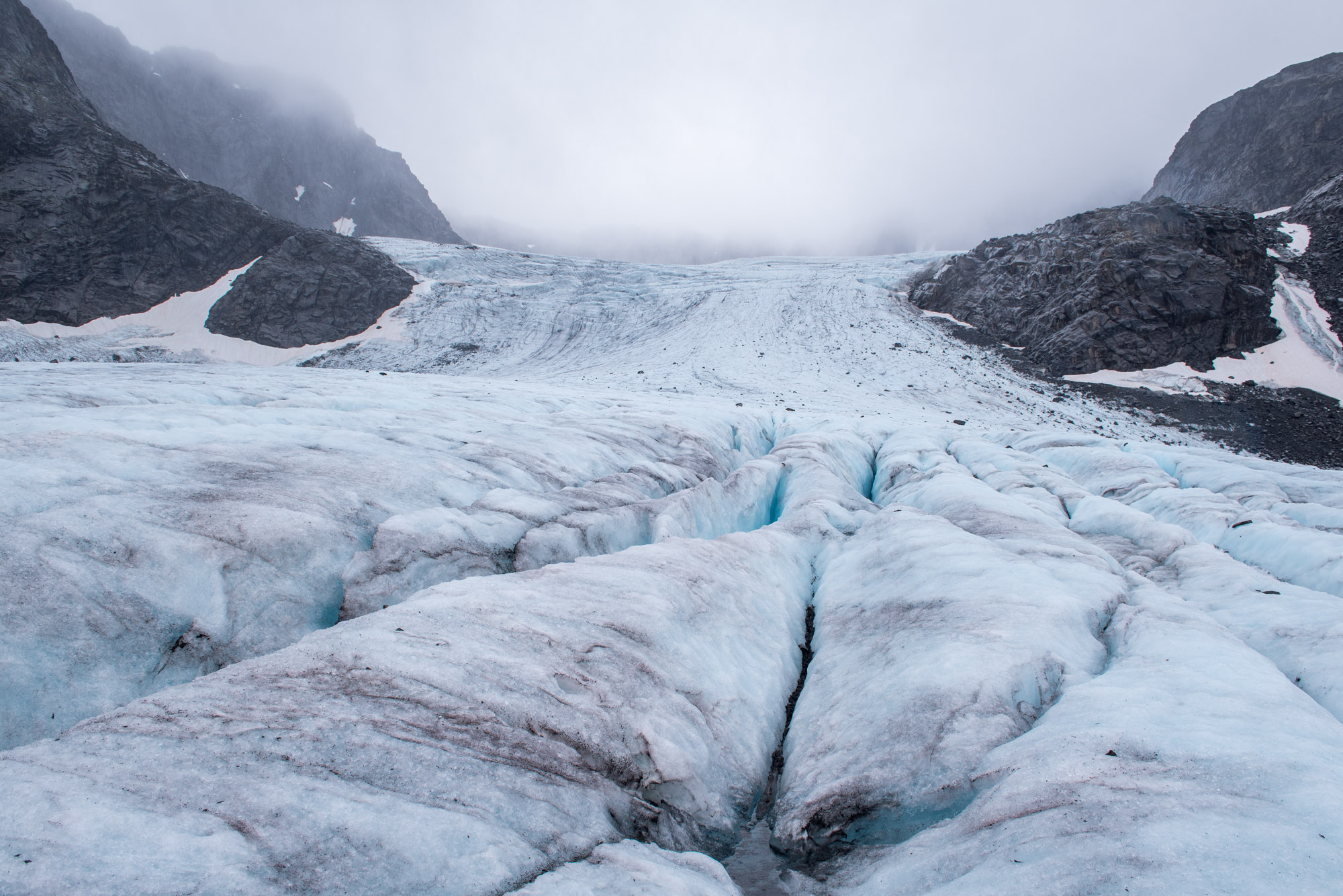
Search within glacierchange: